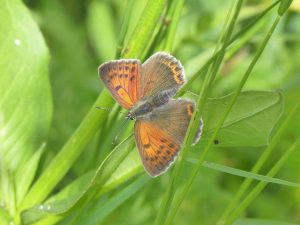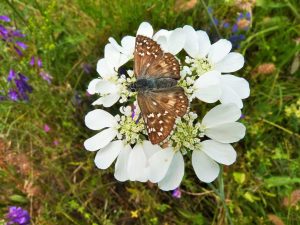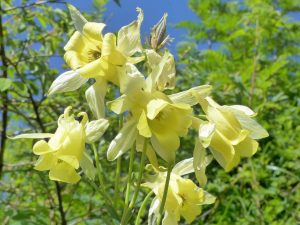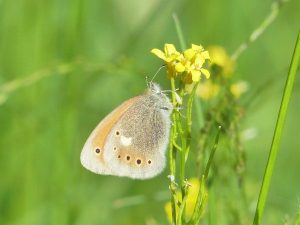
mountain butterflies and wild flowers
Exploring the mountains of southwestern Bulgaria, home to endemic plants, abundant butterflies and peaceful monasteries.
Download leaflet
Dates
To be confirmed
Leaders
To be confirmed
Price
To be confirmed
Included
Return flight London Gatwick to Sofia. Local transport as specified in itinerary. Seven nights accommodation, full board.
Not included
Refreshments. Gratuities. Travel insurance. ETIAS/visa costs. Covid tests and associated costs.
Group size
Minimum 4, maximum 14.
We will start our holiday in the western Rhodopes, where the rounded, pine-covered hills are occasionally cut by streams and rivers running through deep gorges. Heading west, the Rhodope mountains reach their highest point with the massifs of Rila and Pirin, cloaked in ancient conifer forests, leading on to alpine meadows that conceal a dazzling array of colourful wild flowers, and rock screes higher up.
The mountains are home to many local specialities: with a little searching, flowers such as Lilium jankae, Bulgarian Columbine Aquilegia aurea, Red Avens Geum coccineum, Rila Primrose Primula deorum, Balkan Butterwort Pinguicula balcanica and the beautiful Orpheus Flower Haberlea rhodopensis could all be expected, along with beautiful pine forests including trees as old as 1,000 years.
The butterfly fauna is equally rich, and we will be hoping to find the impressive Apollo, Balkan Copper and Balkan Fritillary, along with a mind-boggling variety of ringlets and graylings, blues and hairstreaks, coppers and skippers, as well as some wonderful day-flying moths.
For the bird enthusiast, the highlight will no doubt be time spent in the stunning Trigrad Gorge, looking for the beautiful Wallcreeper that nests in cracks on the rock face here. We will also keep our eyes open for Balkan Chamois grazing on the high mountain slopes, Common Rosefinch, Sombre Tit, Black Woodpecker and Nutcracker.
We will also visit the famous Rila Monastery, the second biggest monastic complex in the Balkans.
Download trip report
Please note that holidays change, although sometimes only slightly, from year to year and previous trip reports may not reflect the planned itinerary, or other holiday details, for the current trip. Please ask us if you would like to know of any significant differences.
Day 1 Our flight takes us to Sofia, from where we travel eastwards to the Western Rhodopes, stopping along the way for our first taster of the Bulgarian countryside.
Days 2-3 We will spend two days exploring the Western Rhodopes, with its meadows and woodlands. More than 2,000 species of plants have been recorded here, of which more than 90 are endemic to the Balkans, including Viola rhodopaea and Geum rhodopaeum and a bewildering variety of saxifrages and campanulas, dianthuses and astragaluses. Chief amongst the area’s attractions is the fantastic Trigrad Gorge – in places the two sides of the gorge are just 100 metres apart. For the birders amongst us, Trigrad Gorge is famous as the home to nesting Wallcreeper, and we will pay particular attention to finding this amazing bird as it feeds across the rock faces. The same habitat is home to the equally impressive Haberlea rhodopensis, a locally-endemic relative of ramonda and the more familiar African violets, which grows on the damp, shaded cliffs, alongside Saxifraga sempervivum and Trachelium rumelianum.
Higher up, we will explore the flower-rich meadows, home to orchids including Bug Orchid Anacamptis coriophora, Heart-flowered Marsh-orchid Dactylorhiza cordigera and Burnt-tip Orchid Orchis ustulata. We also hope to find Sideritis scardica, more familiar as the key ingredient in ‘mountain tea’ throughout the Balkans.
Lower down we will spend some time in the pine forests, where we hope to find Crested Tit, Black Woodpecker, Honey Buzzard and Firecrest. Black Redstart nest in the villages, Dipper will be bobbing on the streams while Corncrake will be singing their strange rasping song from the meadows nearby.
Days 4–6 Today we bid farewell to Trigrad and drive west towards the high mountains. We will spend our time here exploring the two massifs of Pirin and Rila, the latter the highest mountain in the Balkans. Amongst wooded areas we will hope to encounter noisy groups of Nutcracker, whilst in open grasslands Souslik keep watch outside their burrow networks.
This is a beautiful landscape of high peaks (over 2,500m), alpine meadows dotted with glacial lakes, spectacular rocky gorges, precipitous cliffs and dense forests. Some of the Macedonian pines here are estimated to be more than 1,000 years old. The summer flowers should include many local specialities – amongst them bright red Red Avens Geum coccineum, dark pink Rila Primrose Primula deorum, stunning yellow Lilium jankae and the creamy Bulgarian Columbine Aquilegia aurea. In the sub-alpine meadows we can hope to find a wonderful array of alpines including Balkan Butterwort Pinguicula balcanica, Pyrenean Gentian Gentiana pyrenaica, the endemic Bulgarian Sheep’s-bit Jasione bulgarica and some of the more diminutive orchids including Small White Orchid Pseudorchis albida and Frivald’s Gymnadenia Gymandenia frivaldii.
The butterfly fauna here features the Apollo, Clouded Apollo, Mountain Small White, Balkan Copper, Higgin’s Anomalous Blue, Phalakron Blue, Amanda’s Blue, Cynthia’s and Balkan Fritillary, Bulgarian Ringlet and many others. The birds of the mountains include Alpine Chough, Nutcracker, Hazel Grouse and various woodpeckers. Red Squirrels hide amongst the trees, while Balkan Chamois may be picked up as they graze on the mountain slopes.
Day 7 We will visit the Rila monastery, the largest monastery in Bulgaria founded by St Ivan in the 10th century and now a UNESCO World Heritage site. We will also visit more mountain meadows.
Day 8 Today we head back to Sofia airport and our flights home.
Please note that the itinerary may be changed to suit the weather or other practicalities at the discretion of the leaders.
We will be staying at three hotels during the holiday – Devin for three nights, Bansko for three nights and Rila for one night. Exact hotels used will depend on the final group size. All rooms have en-suite facilities with bath and/or shower.
Meals provided during the stay will have an emphasis on local cuisine. Lunches will be a mixture of picnics and café/restaurants. Requests for special diets can be accommodated.
Transport will be by small bus or smaller ‘people carrier’-type vehicles if necessary.
Group flights
Group flights are with Easyjet from London Gatwick to Sofia.
Overland travel
You can reach Bulgaria by train from the UK. From London you can reach Sofia in two nights, with sleeper trains available. Contact us to find out more, and to make your holiday flight-free.
Time zone
Bulgaria is two hours ahead of UK time.
Entry requirements
If you hold a British passport you can travel to countries in the Schengen area (including Bulgaria) for up to 90 days in any 180-day period without a visa. Your passport must be issued less than ten years before the date you enter the country and valid for at least three months after the day you plan to leave.
Starting in 2026 British passport holders will need to apply for the ETIAS European Travel Authorisation to visit Schengen countries. This must be applied for online prior to travel, at a cost of €7 (free for over 70s). Once granted, your ETIAS will be valid for three years.
The weather should be warm, although cooler in the mountains. We hope for dry weather, but rain, wind or cold weather and even snow are always a possibility at this time of year.
On most days, we are out and about for much of the day, albeit walking a relatively slow pace and making several stops each day. We will spending our time out in the mountains, where it is necessary to walk on rougher ground and up some slopes, although none of the walking is strenuous. Walking boots are essential. The highest altitude we go to is about 2,200-2,400 metres, but our accommodation is only at 1,100m. There are likely to be steps at our hotels, with no lift, as well as up/down into the vehicle.





